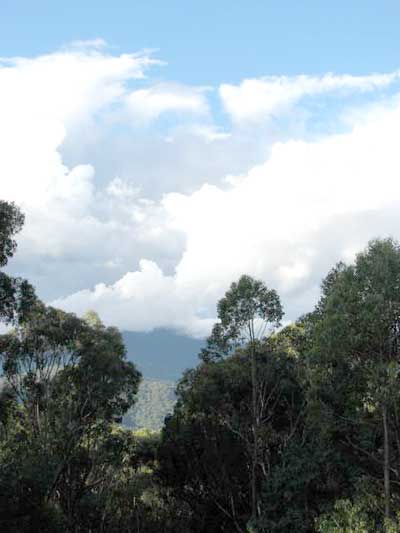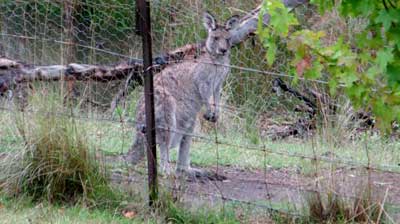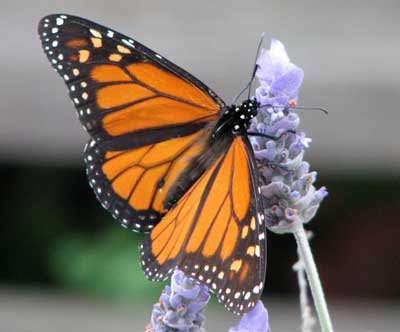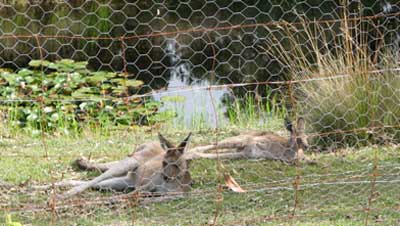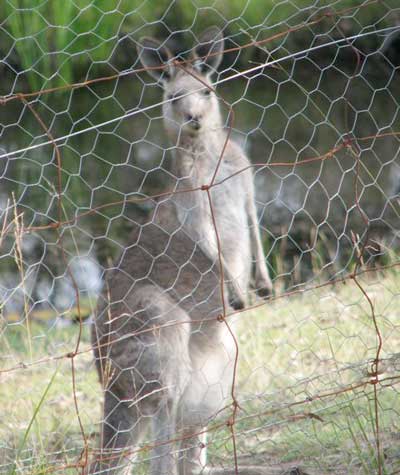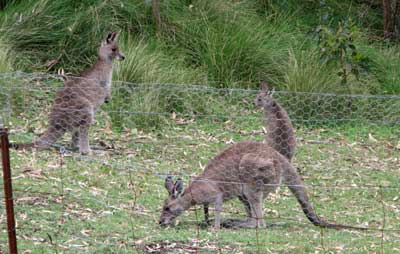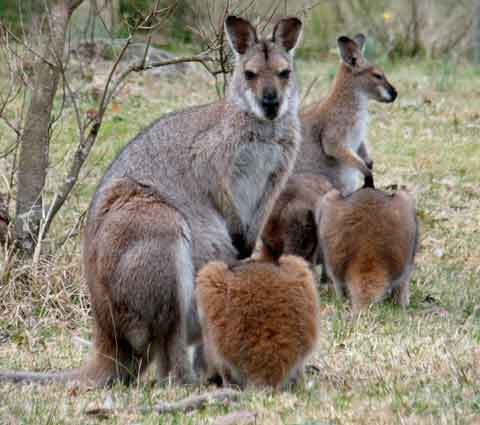
Morning tea time here at Hoppy’s Playgroup and the mothers must stop eating my garden so the youngsters can have their milk. These aren’t the equivalent of babes in arms; they are big joeys, who, as I’ve noted before, can be almost as big as their mothers.
They graze, but must have their milk too, and the mothers patiently prop and let them poke their faces into the pouches and drink their fill, passing the time dozing or scratching or washing their paws.
This wallaby lot looked like the queue at the canteen.
But as the joeys grow, the capacity of those pouches is stretched to extraordinary limits.

I had to look twice at this kangaroo. A randy young male? But the penis was too thick, too dark, too straight.
No, just such a big joey that its tail wouldn’t fit back into the pouch. I do often see the long hind feet and a thin tail tip poking out of wallaby pouches, but there are fewer roos so I wasn’t used to the scale of this one.
I can still feel the kicks in the ribs and the elbows in the guts from babies too long in utero myself.
Just imagine a big joey diving in, nose first as they do, then trying to turn 360 degrees, scrabbling about with those long pointy — clawed — hind feet and very solid tail.
All I can say as I watch the wildly contorting pouch is ‘Ouch’!
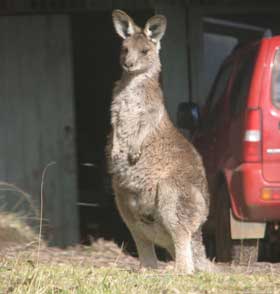 While the wallabies have more than made themselves at home here in my yard-that-was-once-a-garden, the kangaroos have been wary, staying over in the far orchard end and taking off if they saw me. But I recently spotted this young one through my window; being up near the shed, it was unusually close to my cabin, but didn’t notice me snapping its picture though the window. Then I looked along the track from the shed, even closer to me, and there they were, a little family of kangaroos sprawled about on track and bank, lazy and unperturbed.
While the wallabies have more than made themselves at home here in my yard-that-was-once-a-garden, the kangaroos have been wary, staying over in the far orchard end and taking off if they saw me. But I recently spotted this young one through my window; being up near the shed, it was unusually close to my cabin, but didn’t notice me snapping its picture though the window. Then I looked along the track from the shed, even closer to me, and there they were, a little family of kangaroos sprawled about on track and bank, lazy and unperturbed.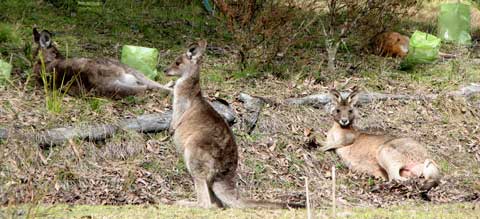
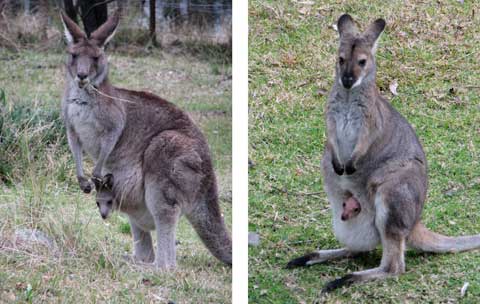
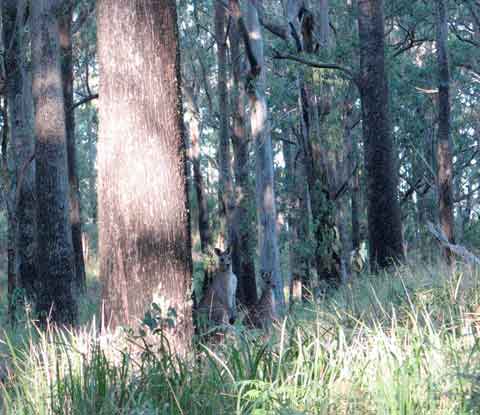 Out in the real forest it is always a matter of double-take with our cleverly camouflaged creatures; I think I see a dark shadow sway, a tree trunk bend. Kangaroo? Wallaroo? One blink and they might be gone.
Out in the real forest it is always a matter of double-take with our cleverly camouflaged creatures; I think I see a dark shadow sway, a tree trunk bend. Kangaroo? Wallaroo? One blink and they might be gone.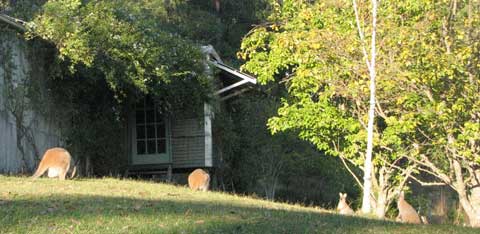 But now that my house yard is their territory too, I get different, more domestic views of my macropod neighbours. In the early mornings, as the sun begins to soak up the dew and highlight the trees, it now also picks out fluffy ears, closed sundrowsing eyes, busily feeding backs, and the many babies, cosily enpouched or skittishly out-pouched.
But now that my house yard is their territory too, I get different, more domestic views of my macropod neighbours. In the early mornings, as the sun begins to soak up the dew and highlight the trees, it now also picks out fluffy ears, closed sundrowsing eyes, busily feeding backs, and the many babies, cosily enpouched or skittishly out-pouched.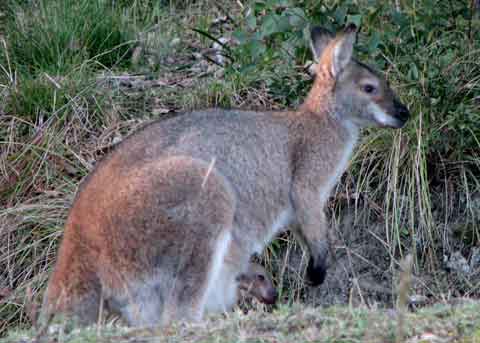
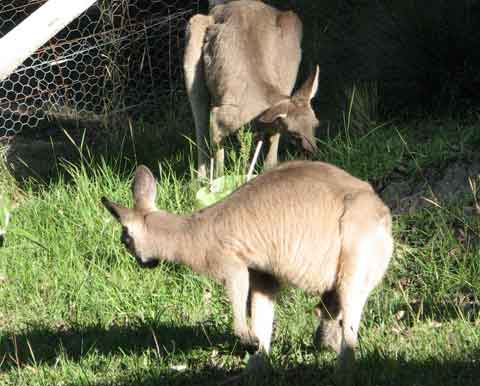 One late afternoon I opened all four gates into the house yard. You will not have your wallaby photos obscured by netting from now on.
One late afternoon I opened all four gates into the house yard. You will not have your wallaby photos obscured by netting from now on.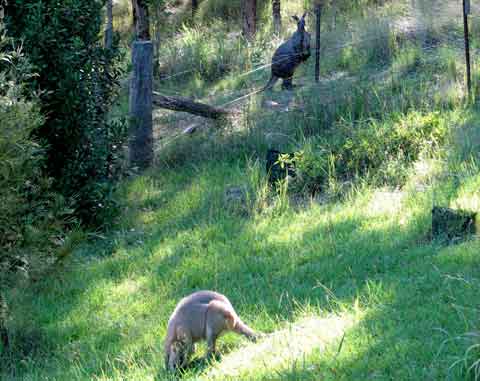 Slowly they ventured in. Wallabies first. The wallaroo looked on disapprovingly from outside the fence, where he stayed. Kangaroos are coming in too, but not close yet.
Slowly they ventured in. Wallabies first. The wallaroo looked on disapprovingly from outside the fence, where he stayed. Kangaroos are coming in too, but not close yet. Soon they were everywhere, and over the next few days some began to rest inside the yard, using the shade of buildings and trees during the day. Some were more calm than others, some staying still as I walked past, others bolting in panic.
Soon they were everywhere, and over the next few days some began to rest inside the yard, using the shade of buildings and trees during the day. Some were more calm than others, some staying still as I walked past, others bolting in panic.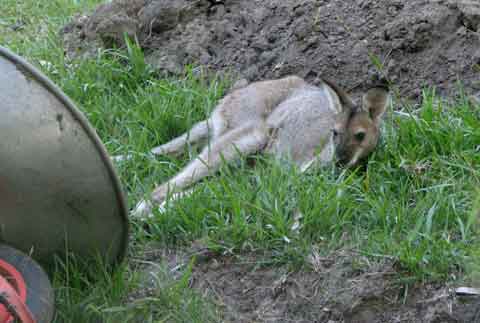 I immediately cleaned some strategic windows so I could take photos, like this laid-back wallaby. I enjoy observing the process of familiarisation. This is a new era of living here for me — and my neighbours.
I immediately cleaned some strategic windows so I could take photos, like this laid-back wallaby. I enjoy observing the process of familiarisation. This is a new era of living here for me — and my neighbours.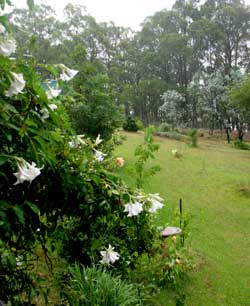 Christmas is over and it’s been raining steadily on the mountain since Christmas night. Welcome gentle rain falling from cloud cover that is allowing a pale warm light through as well –and probably putting a light charge into the solar batteries as well.
Christmas is over and it’s been raining steadily on the mountain since Christmas night. Welcome gentle rain falling from cloud cover that is allowing a pale warm light through as well –and probably putting a light charge into the solar batteries as well.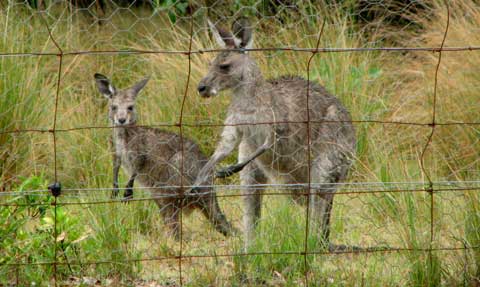 Beyond occasional emergency dashes I am confined within the cabin and the verandah’s dripping edges.
Beyond occasional emergency dashes I am confined within the cabin and the verandah’s dripping edges.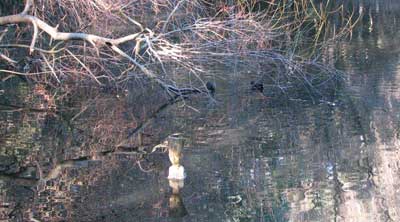
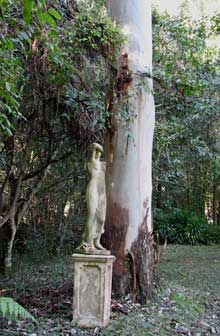 Kangaroos laze in security by Grecian columns; semi-naked ladies swoon by equally ‘palely loitering’ Blue Gums; a multitude of birds other than waterbirds are attracted to the water – such as a flock of White-headed Pigeons.
Kangaroos laze in security by Grecian columns; semi-naked ladies swoon by equally ‘palely loitering’ Blue Gums; a multitude of birds other than waterbirds are attracted to the water – such as a flock of White-headed Pigeons. 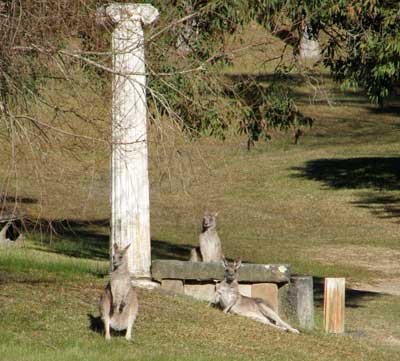
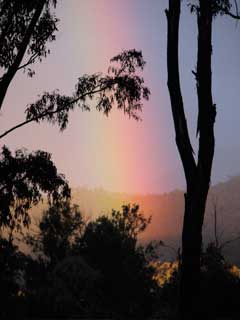 My first day camping in the Warrumbungle National Park ended with showers and a stunning misty sunset, complete with rainbow.
My first day camping in the Warrumbungle National Park ended with showers and a stunning misty sunset, complete with rainbow. 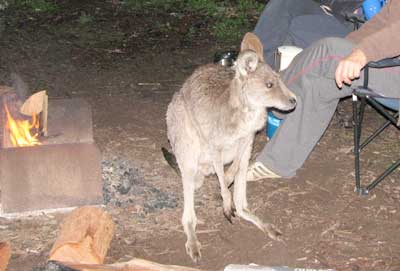
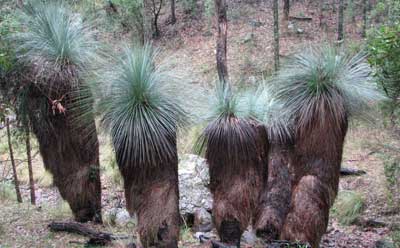
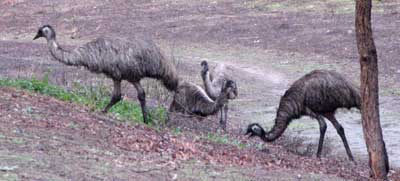

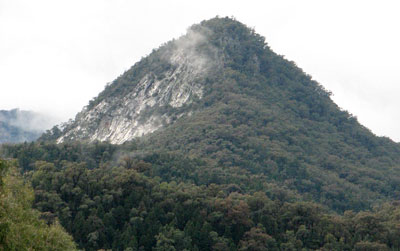

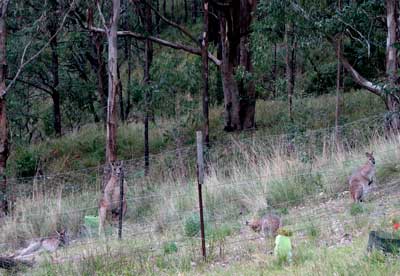
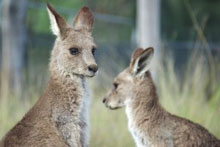 For the past ten years, Sandra Stewart has been rescuing and caring for injured and orphaned native wildlife on her Upper Hunter wildlife refuge – Rocky Creek.
For the past ten years, Sandra Stewart has been rescuing and caring for injured and orphaned native wildlife on her Upper Hunter wildlife refuge – Rocky Creek. 